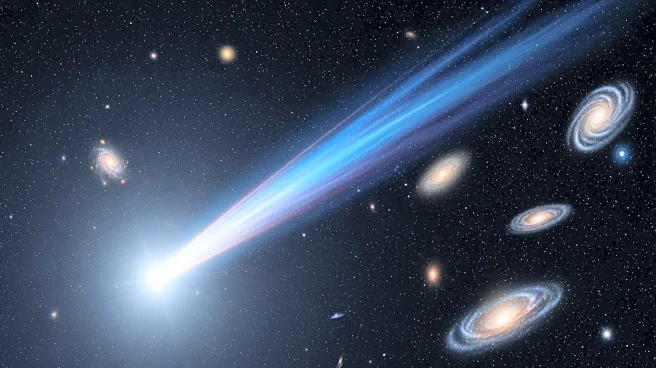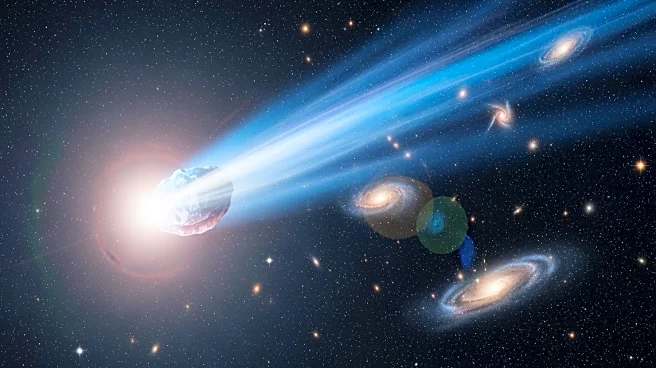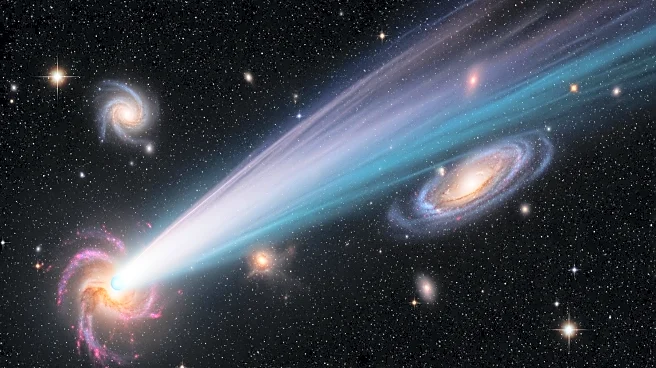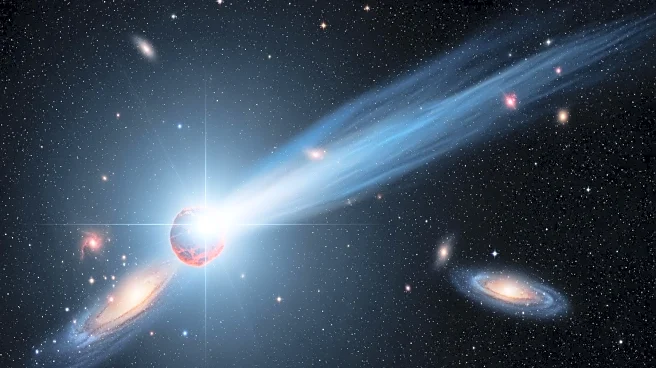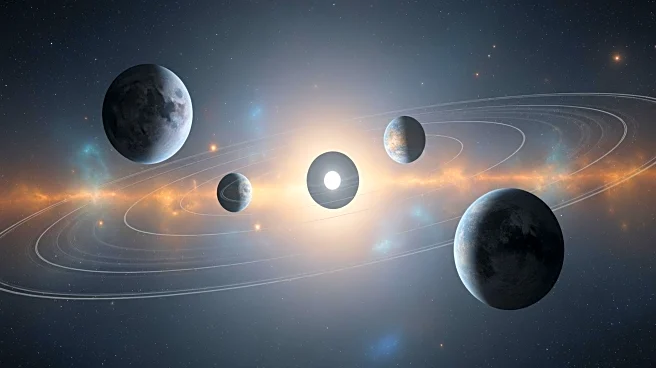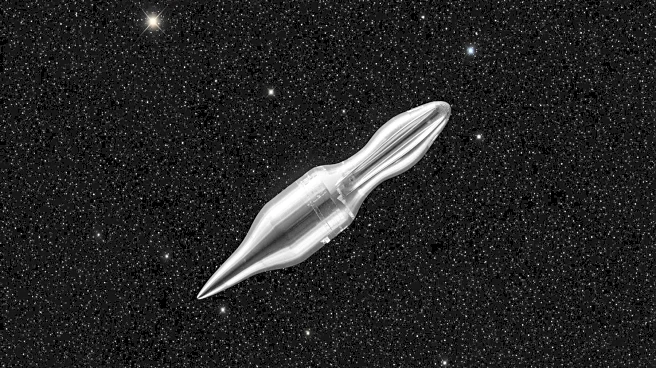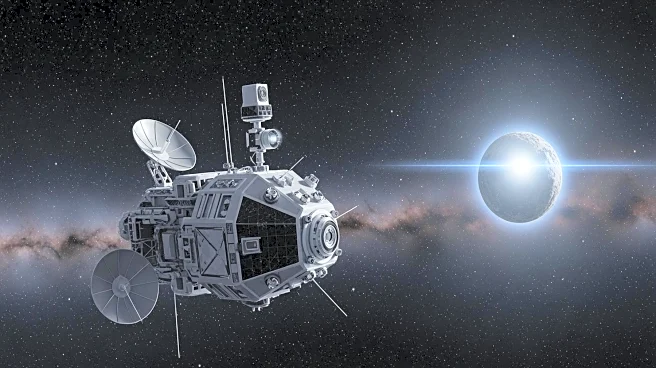What's Happening?
The interstellar comet 3I/ATLAS, a rare visitor from another star system, is nearing the sun, entering its most active phase. According to NASA, this comet is only the third interstellar object identified
in our solar system and is considered the largest and fastest among them. First confirmed in July, 3I/ATLAS has already entered the inner solar system and is expected to reach its closest point to the sun on October 29. The comet is composed of frozen gases and dust, potentially older than our solar system. As it approaches the sun, the heat causes gas and dust to erupt from its surface, forming a bright halo known as a coma, with a tail extending away from the sun due to solar radiation pressure.
Why It's Important?
The passage of 3I/ATLAS offers a unique opportunity for scientists to study material that may have originated around a distant star long before Earth existed. This event allows researchers to gain insights into the composition and origins of interstellar matter, contributing to our understanding of the galaxy beyond our solar system. The comet's activity as it nears the sun could provide valuable data on how such objects behave under solar influence, potentially informing future studies of similar interstellar visitors. The scientific community stands to gain significant knowledge from this rare event, enhancing our comprehension of cosmic phenomena.
What's Next?
As 3I/ATLAS approaches the sun, research teams worldwide are preparing to observe the comet using both ground-based and orbital telescopes. Instruments on space missions heading toward Jupiter are being redirected to collect data on the comet. These observations are expected to reveal further information about the comet's composition and behavior. Once 3I/ATLAS passes the sun, it will continue its journey into interstellar space, unlikely to return, making this a fleeting opportunity for scientific study.
Beyond the Headlines
The study of 3I/ATLAS not only provides immediate scientific insights but also contributes to the broader understanding of interstellar objects and their interactions with solar systems. This event highlights the importance of international collaboration in space research, as scientists from various countries work together to maximize the data collected. The comet's journey underscores the dynamic nature of our solar system and its connections to the wider galaxy, prompting further exploration and study of interstellar phenomena.
